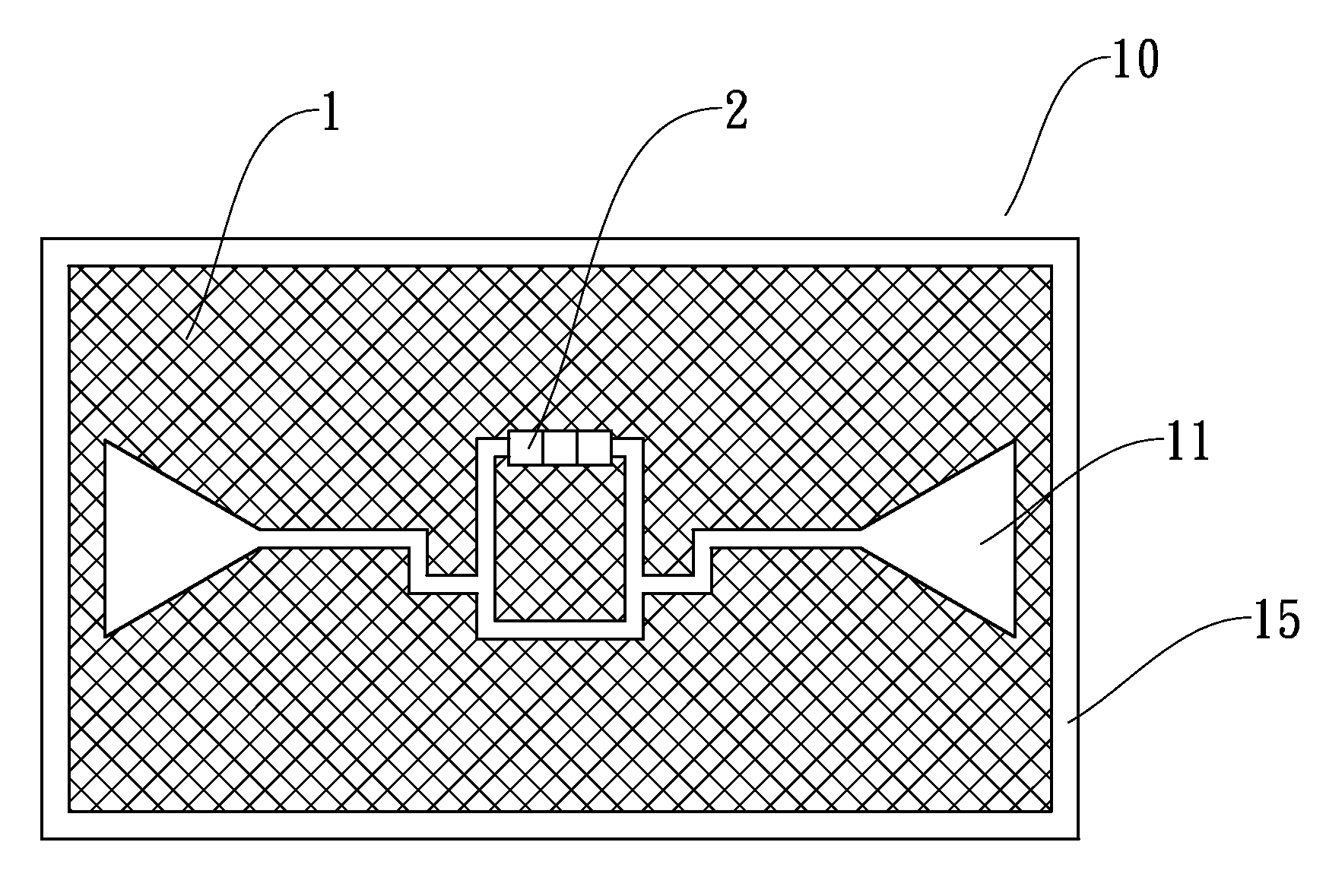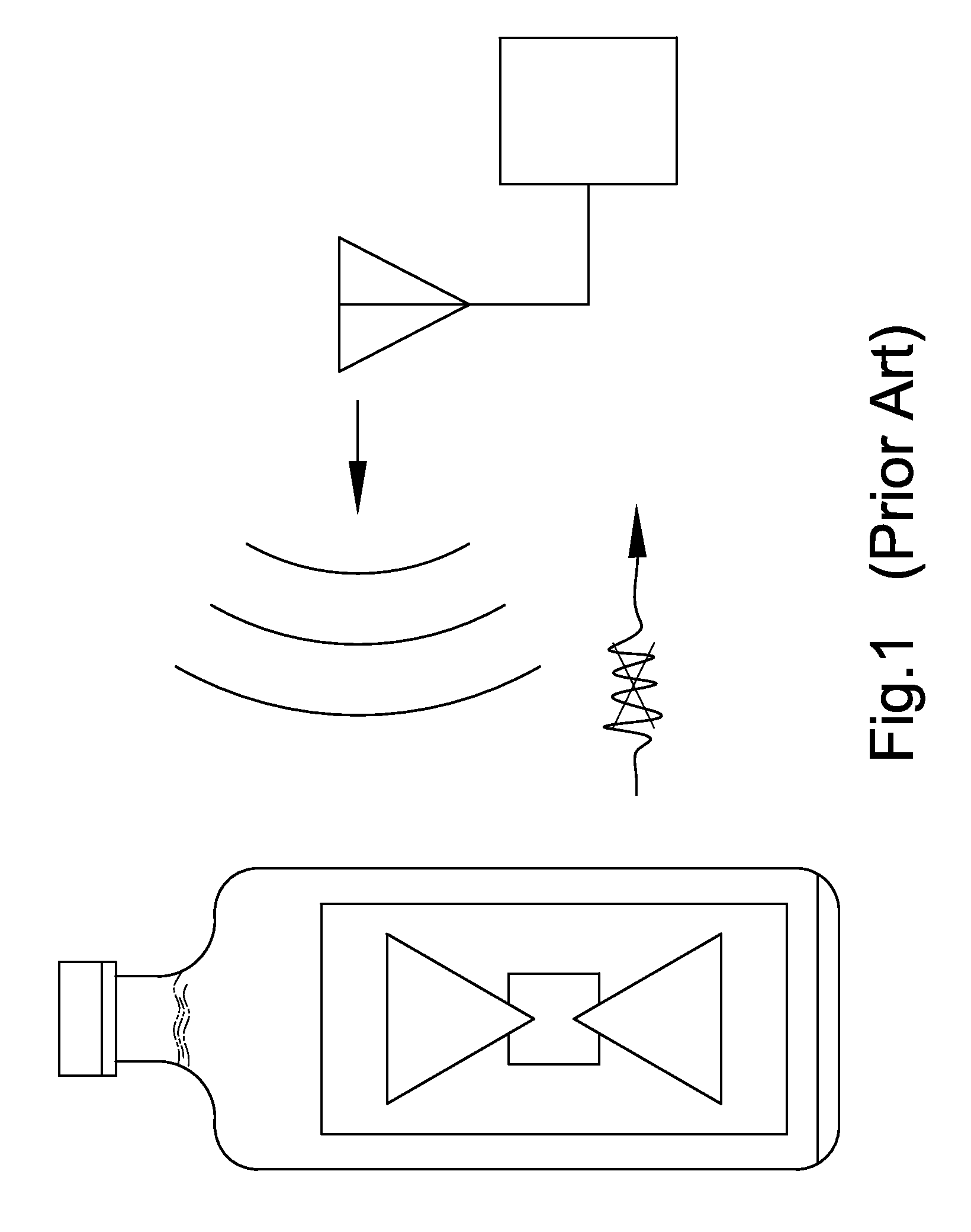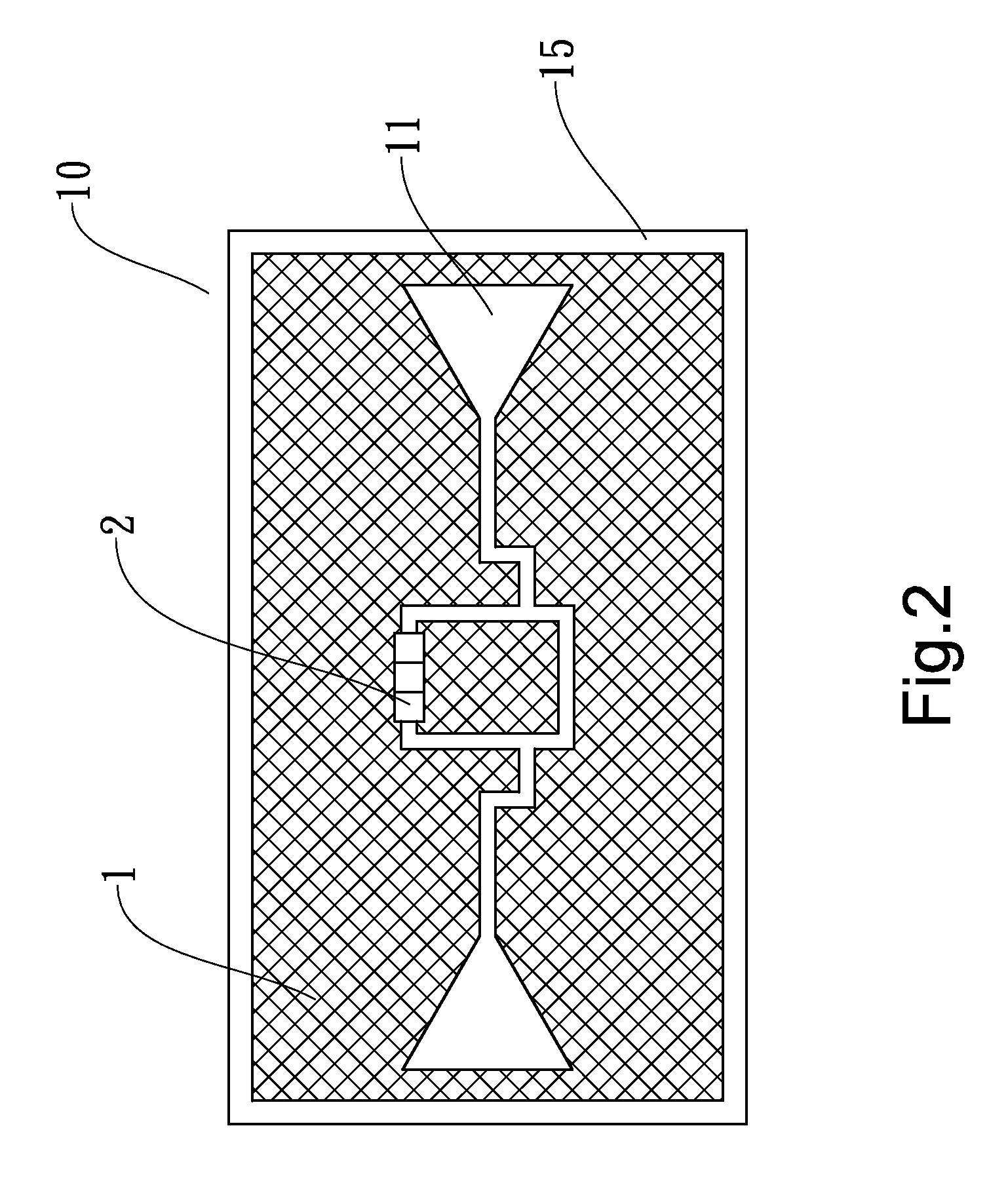Structure for radio frequency identification and its manufacturing method
a radio frequency identification and manufacturing method technology, applied in the direction of slot antennas, instruments, antennas, etc., can solve the problems of easy affecting of the electrical properties of the rfid, rfid reader cannot correctly read the data, complex manufacturing methods, etc., to achieve a simple and cheaper method, reduce manufacturing costs, and low power energy consumption
- Summary
- Abstract
- Description
- Claims
- Application Information
AI Technical Summary
Benefits of technology
Problems solved by technology
Method used
Image
Examples
Embodiment Construction
[0029]As shown in FIGS. 2˜3, an RFID tag 10 of the present invention comprises:
[0030]a substrate 1 with an entire side of metal conductive material;
[0031]a slot antenna 11 disposed on the metal side of the substrate 1; and
[0032]an identification chip 2 disposed on the substrate and electrically connected to the slot antenna.
[0033]The finished tag 10 can be laminated with a lamination frame 15 and be provided with different configurations; for example, the slot antenna 11 of the substrate 1 may have two symmetrical (as shown in FIG. 2) or two asymmetrical (as shown in FIG. 3) closed slots, or a two-sided opened slot (as shown in FIG. 4), or a single closed slot and one opened slot (as shown in FIG. 5).
[0034]Since the RFID of the present invention is very different from the prior art structure, a more simplified and efficient manufacturing method is performed. As shown in FIGS. 6˜7, the manufacturing method comprises:
[0035](A) selecting a substrate 1 with an entire side having continu...
PUM
 Login to View More
Login to View More Abstract
Description
Claims
Application Information
 Login to View More
Login to View More - R&D
- Intellectual Property
- Life Sciences
- Materials
- Tech Scout
- Unparalleled Data Quality
- Higher Quality Content
- 60% Fewer Hallucinations
Browse by: Latest US Patents, China's latest patents, Technical Efficacy Thesaurus, Application Domain, Technology Topic, Popular Technical Reports.
© 2025 PatSnap. All rights reserved.Legal|Privacy policy|Modern Slavery Act Transparency Statement|Sitemap|About US| Contact US: help@patsnap.com



